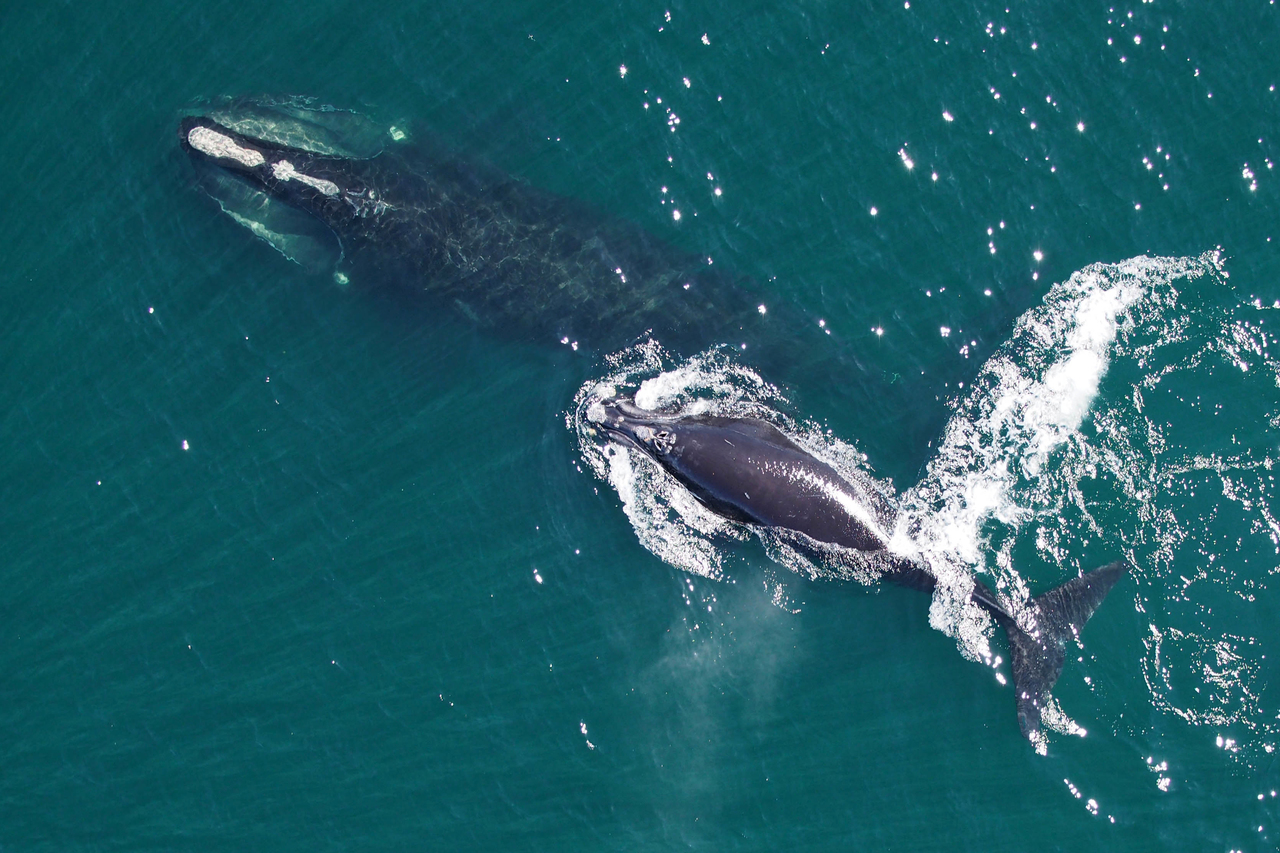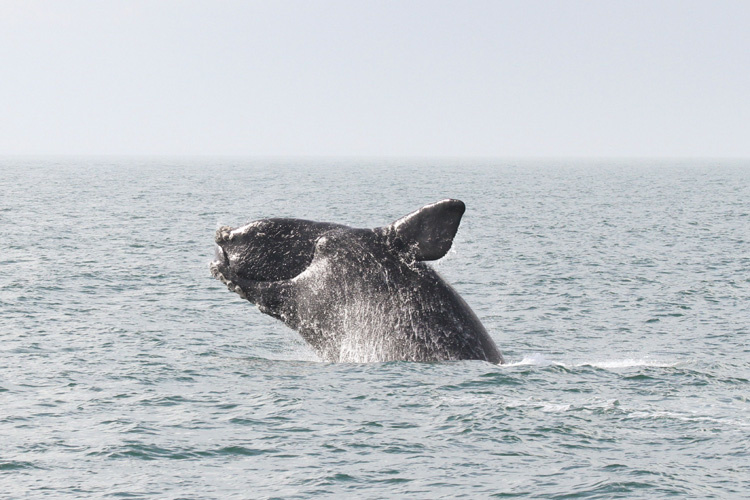
Creature Feature: North Atlantic Right Whale
North Atlantic right whales are massive, weighing up to 70 tons and growing to 52 feet in length. They are large baleen whales characterized by a stocky black body with no dorsal fin. These whales are known by a raised patch of rough skin (callosities) on their heads that appear white. Each whale has a unique pattern of callosities, which allow scientists to identify and track individual whales.
Habitat
North Atlantic right whales live in the Atlantic Ocean, moving between the southeastern United States, New England, and Newfoundland in southern Canada. Right whale nurseries are in shallow waters along the east coast of the United States and their annual migrations include passage through both Gray’s Reef National Marine Sanctuary and Stellwagen Bank National Marine Sanctuary. During the winter months, females give birth and nurse their calves off the southeastern U.S. where waters are warm. During the summer, they are generally found in more northern waters where they feed and mate.
Diet & Behavior
North Atlantic right whales don’t have teeth. Instead, they have baleen plates, sheets of closely knit keratin, and eat by moving large amounts of water through their jaws to filter small fish and krill. These giants of the sea have been known to live around 70 years, but NOAA research indicates some individuals could live much longer.
They are known to propel themselves out of the water and breach in a spectacular manner, which makes for great whale watching (but remember your Ocean Etiquette!). They also produce vocalizations from the blowholes atop their heads and slap their tail and flippers on the surface to communicate with each other.
Reproduction
Female North Atlantic right whales become sexually mature around the age of 10, giving birth to one calf after a 12-month gestation period. Within the known group, there are only 100 actively reproducing females of the species. In the 1980s, scientists recorded births by female right whales every three or four years. Today, females are giving birth every 9 years, adding to the concerns for the population. National Geographic reports that the 2018 breeding season has produced no new calves.
When North Atlantic right whales do produce offspring, the calves average a length of 14 feet or 4.2 meters. Mothers and calves are closely bonded. Calves often keep close contact by swimming upon the mother’s back or prodding her with its head. Mother North Atlantic right whales have been observed rolling over on their backs to hold their calf. Like many whale and dolphin species, females travel in larger groups with their calves, while males tend to travel in smaller groups or independently.
Endangered Status
North Atlantic right whales are one of the world’s most endangered species. They have been listed on the Endangered Species Act since 1970 and are also protected by the Marine Mammal Protection Act of 1972. The most recent stock assessment report from NOAA Fisheries claims there are only 465 living individuals, although estimate fatalities from 2017 reduced the population to an about 450. That’s down from a peak population of 483 in 2010. Experts caution that the number is only an estimate due to the difficult nature of counting whale populations. In the past year, NOAA researchers report the loss of another 18 North Atlantic Right Whales accounting for nearly 4 percent of the species’ population.
While no longer under threat from commercial whaling, a practice that is outlawed in the United States, they are still at risk from entanglement and ship strikes. According to the Smithsonian, since 2009, 58% of North Atlantic right whale deaths have been due to entanglement in fishing gear. New fishing technology has helped, using buoy lines that automatically release when pressure is applied.
To help mitigate the risk of human impacts, federal law prohibits approaching right whales at distances closer than 500 feet with limited exceptions. Voluntary speed reductions by commercial vessels have also reduced the number of vessel strikes.
In addition, the Office of Protected Resources within NOAA’s National Marine Fisheries Service has enacted a recovery plan to help the species recover.
You can help North Atlantic right whales by choosing responsibly sourced seafood and supporting the mission of the National Marine Sanctuary Foundation.

